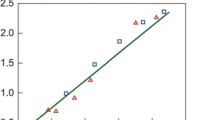Summary
It is not possible in practice to carry out measurements in quantitative or qualitative analysis at a precision level better than 0.5% if conventional equipment such as recorders and electronic integrators are used to obtain the data. Only numerical techniques of on-line or off-line measurements associated with data handling by computer can be used. From their very nature numerical techniques are discontinuous and the number of experimental points is limited. According to information theory this discontinuous character does not imply a loss of accuracy provided that some simple relationship derived from the theory of sampled systems is fulfilled. These conditions deal with the choice of the sampling frequency, the frequency band-width of the amplifier and measurement system, and the upper limit of the signal frequency. We have made a theoretical and an experimental study of these phenomena and the results allow us to derive some simple rules which make the choice of parameters of the system of data acquisition easy. We have also determined the main sources of error in data acquisition systems and calculated their contribution.
Similar content being viewed by others
Literature
Guiochon, G., Goedert, M., Jacob, L., Gas Chromatography 1970, R. Stock, ed., The Institute of Petroleum, London, 1971, p. 160.
Goedert, M., Guiochon, G., J. Chromatog. Sci.,7, 323 (1969).
Goedert, M., Guiochon, G., Anal. Chem.,42, 966 (1970).
Goedert, M., Guiochon, G., Chimie Analytique,53, 214 (1971).
Oberholtzer, J. E., Rogers, L. B., Anal. Chem.41, 1234 (1969).
Culp, R. A., Lochmuller, C. H., Moreland, A. K. Swingle, R. S., Rogers, L. B., J. Chromatog. Sci.9, 6 (1971).
Ragazzini, J. R., Franklin, G. F., Les Systèmes asservis échantillonnés, Dunod, Paris, (1962).
Stern, J., de Barberac, J., Poggi, R., Méthodes pratiques d'étude des fonctions aléatoires, Dunod, Paris (1967), p. 219.
McWilliam, G., Bolton, H. C. Anal. Chem.,41, 1755 (1969).
Bassière, M., Gaignebet, E., Métrologie Générale, Dunod, Paris (1966), p. 160.
Schmauch, L. J., Anal. Chem.,31, 225 (1959).
Grushka, E., Anal. Chem.44, 1733 (1972).
Sternberg, J. C., Advance in Chromatography. J. C. Giddings, R. A. Keller ed., M. Dekker, New-York, 1966, Vol. 2, p. 255.
Goedert, M., Guiochon, G., To be published. J. Chromatog. Sci.
Author information
Authors and Affiliations
Rights and permissions
About this article
Cite this article
Goedert, M., Guiochon, G. Sources of error in chromatographic analysis. Effect of sampling parameters on the accuracy of numerical measurements. Chromatographia 6, 76–83 (1973). https://doi.org/10.1007/BF02270542
Received:
Accepted:
Issue Date:
DOI: https://doi.org/10.1007/BF02270542




